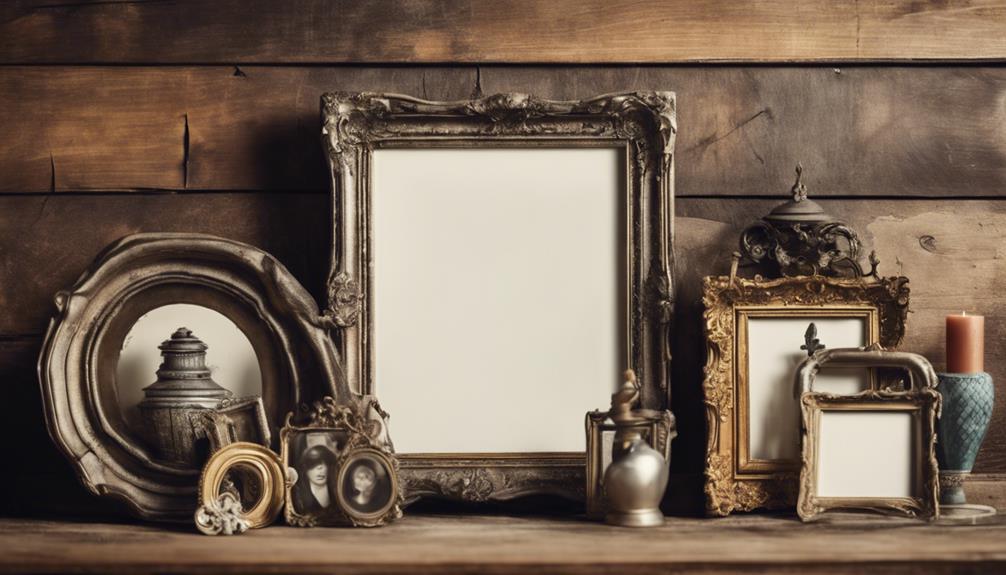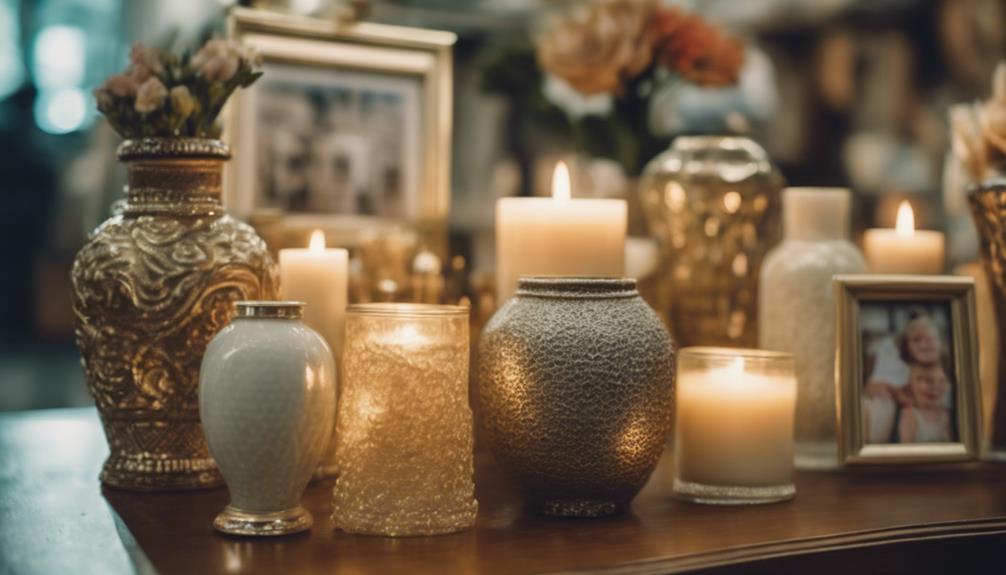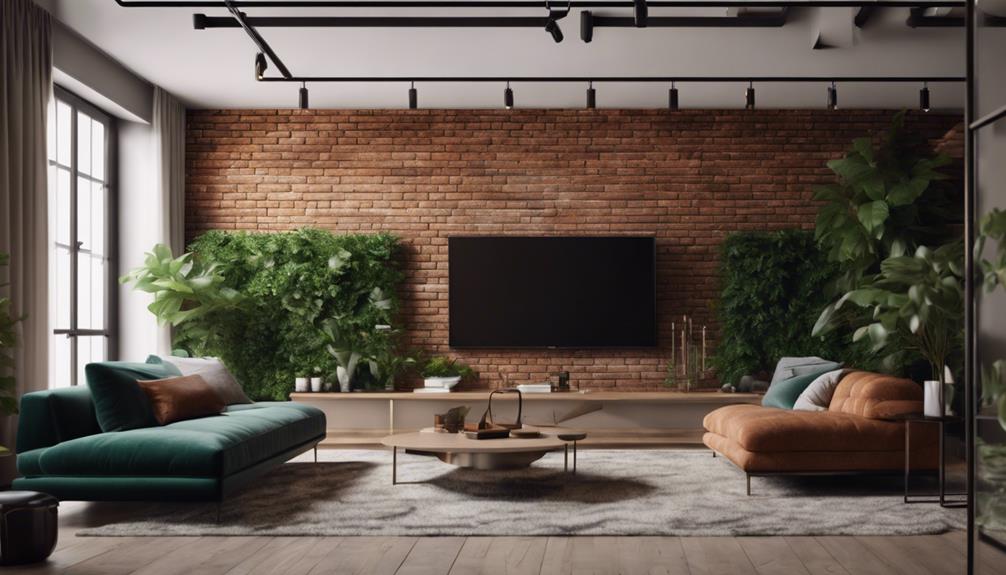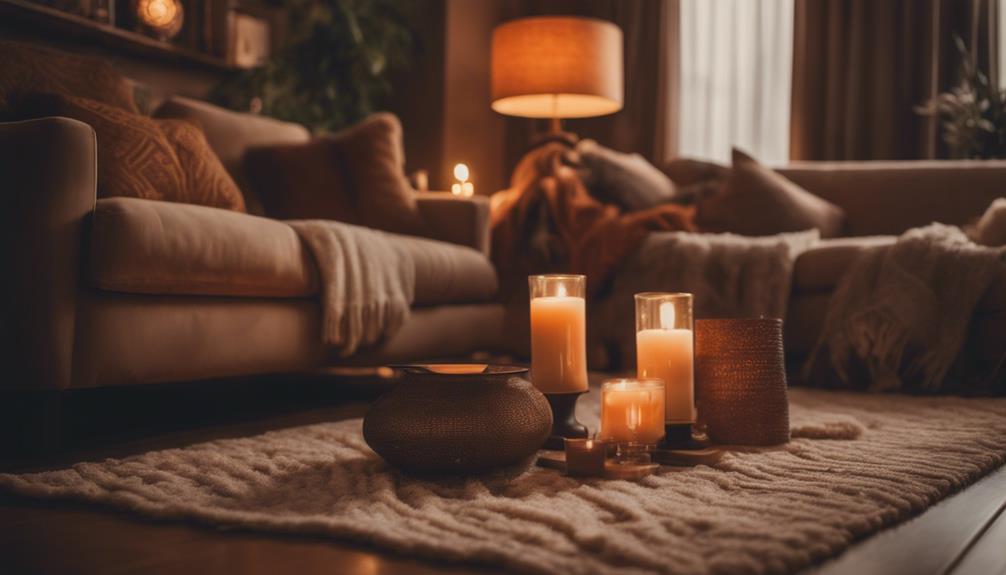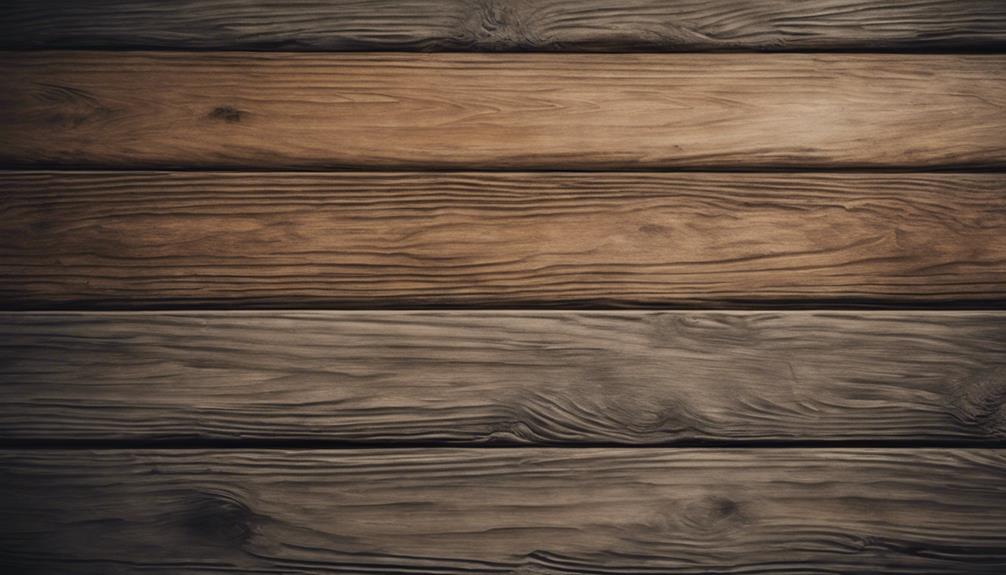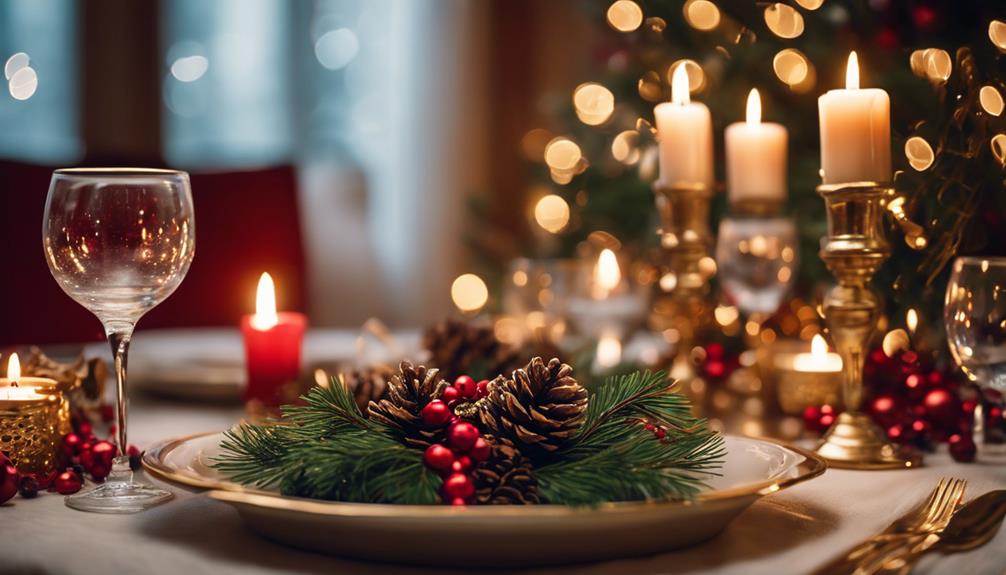When it comes to decorating with empty frames, the possibilities are endless. You can frame the negative space to create a unique focal point, or mix and match frame shapes and sizes to add visual interest. Consider building a frame mosaic or incorporating mirrors to add depth and dimension. Create a gallery wall effect by grouping frames together, or make a statement with scale by using oversized frames. By experimenting with different framing techniques, such as layering or contrasting frame styles, you can create a stunning display that reflects your personal style. As you explore these ideas, you'll uncover even more ways to turn empty frames into works of art.
Key Takeaways
• Experiment with various frame shapes, sizes, and styles to create a visually appealing display.
• Mix and match frames of different shapes and sizes to add depth and visual interest to decor.
• Create a focal point by clustering frames or using oversized frames as anchors.
• Balance larger frames with smaller ones to achieve a visually appealing arrangement.
• Use empty frames to draw the viewer's eye through the space and create a unique display.
Framing the Negative Space
By deliberately leaving some frames empty, you create a sense of visual tension that draws the eye and sparks curiosity, making the surrounding decor stand out. This clever technique, known as 'framing the negative space,' allows you to rethink the traditional approach to decorating with frames.
Instead of filling every available space on your wall, you're creating a sense of balance and harmony by leaving some frames empty. This approach adds depth and visual interest to your wall, making it a focal point in the room.
By combining empty frames with existing framed pictures, you can create a unique and intriguing visual display. The empty frames will draw attention to the surrounding decor, making it stand out in a way that a fully framed wall wouldn't.
Creating a Focal Point Wall

You can take your empty frame decor to the next level by clustering them together to create a focal point wall that draws the eye and adds visual interest to any room. This creative display idea can transform a blank wall into a stylish and personalized focal point in any room.
To create a unique look, mix different frame sizes and styles to add visual interest to the display. You can arrange the frames in a symmetrical or asymmetrical pattern, depending on your personal taste.
To enhance the focal point wall, consider adding greenery, artwork, or decorative items within the frames. This won't only add depth but also create a visually appealing display.
Mixing Frame Shapes and Sizes
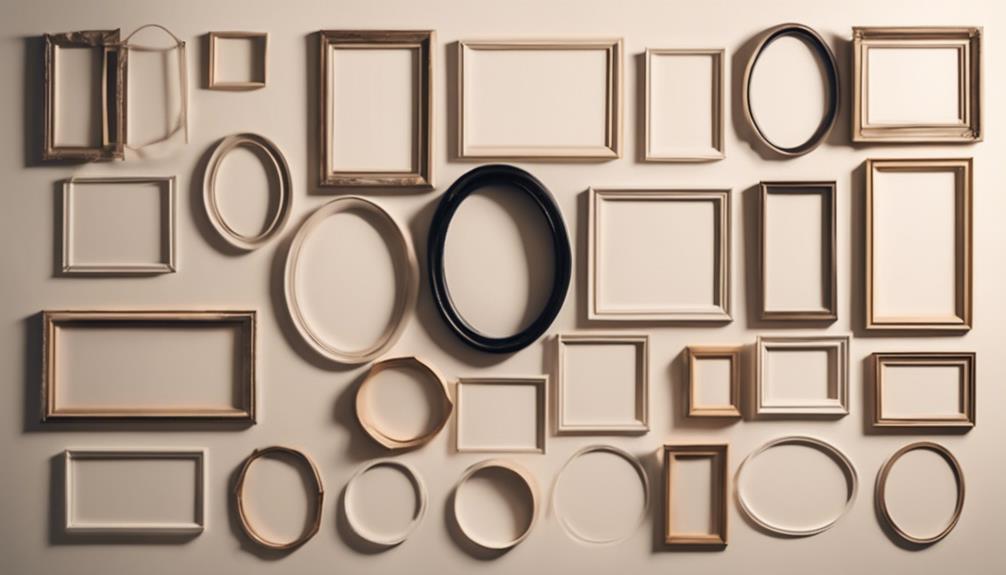
As you experiment with mixing frame shapes and sizes, you'll find that incorporating a variety of frame sizes and unconventional shapes, such as oval or circular frames, adds depth and visual interest to your display.
By combining rectangular frames of different sizes, you can create a unique, layered look that draws the eye.
Frame Size Variety
Mixing frame shapes and sizes is a clever way to inject visual interest and variety into your decor. By combining different frame sizes, you can create a dynamic and layered look on your walls. This technique is especially effective when working with empty frames, as it allows you to add depth and dimension to your overall decor scheme.
Here are a few tips to keep in mind when experimenting with frame size variety:
- Combine small and large frames to balance the visual weight of your display.
- Experiment with various frame sizes to create a personalized and unique gallery wall.
- Don't be afraid to mix and match different frame shapes and sizes to add visual interest to your decor.
Unconventional Shapes
By combining frames of varying shapes, including oval, hexagon, or asymmetrical ones, you can break free from the monotony of traditional square or rectangular frames and add a touch of whimsy to your decor. Unconventional shapes can create a unique look that sets your empty frames apart from the rest. Experiment with combining different shapes to create a cohesive and eclectic display that showcases your personal style.
Don't be afraid to play with different sizes, too. Mixing large, medium, and small frames can create a visually appealing arrangement on your walls. Remember, the key is to have fun and be creative!
Unconventional shapes can add a level of sophistication and elegance to your decor, especially when paired with traditional frames. For example, an oval frame can add a touch of vintage charm, while a hexagonal frame can bring a modern, edgy vibe.
Adding Dimension With Layers
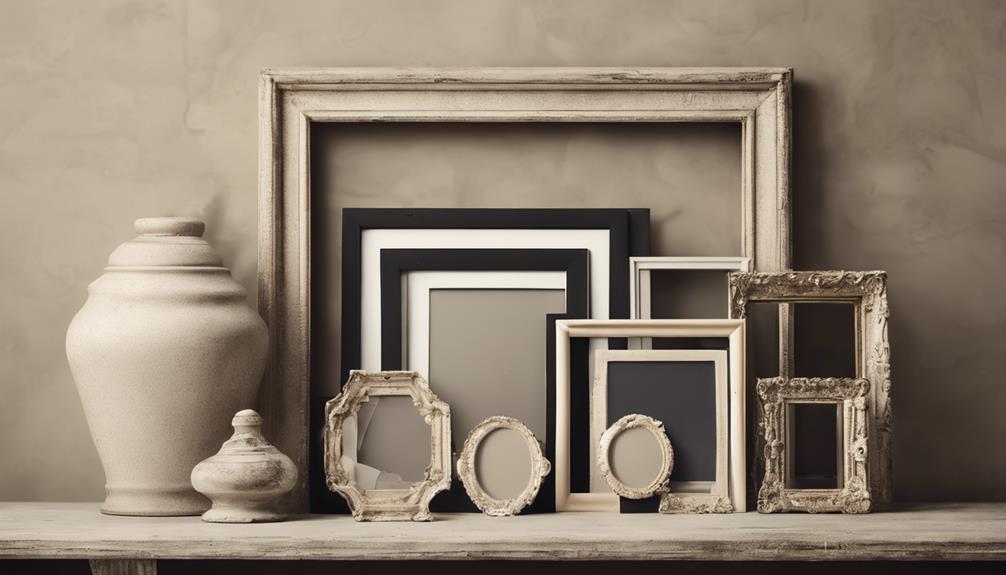
As you explore the possibilities of adding dimension with layers, you'll discover the versatility of frame stacking options, which allow you to create a unique, multi-level display that draws the eye.
By experimenting with overlapping frame effects, you can achieve a visually striking arrangement that adds complexity to your decor.
Whether you're layering frames of varying sizes, shapes, or styles, the key is to have fun and experiment with different combinations to find the look that works best for you.
Frame Stacking Options
You can create a visually stunning display by stacking frames of varying sizes and shapes, adding depth and dimension to your walls. By using empty frames, you can add a unique touch to your decor without breaking the bank. Stacking frames allows you to create a personalized and dynamic look that reflects your personal style.
Here are some tips to keep in mind when stacking frames:
- Experiment with different frame sizes and shapes to create a visually interesting display.
- Mix and match frame styles, such as modern and vintage, to add texture and depth to your walls.
- Don't be afraid to think outside the box – or frame – and stack frames vertically or horizontally to create a unique look.
Overlapping Frame Effects
How can you add a touch of sophistication to your wall decor without breaking the bank or sacrificing style? One creative approach is to experiment with overlapping frames, a technique that adds a layer of depth and dimension to your wall decor.
By layering frames of varying sizes and styles, you can create a visually appealing display that showcases multiple frames or tells a cohesive story. This method can be especially effective when used on a shelf or mantel, where the overlapping frames can create a grand, eye-catching effect.
To take it up a notch, mix and match frame sizes and styles to enhance the overall impact of the display. Overlapping frames can also be a clever way to fill wall space and make a statement in the room. By experimenting with different arrangements and combinations, you can create a unique and sophisticated look that's all your own.
Contrasting Frame Styles Together
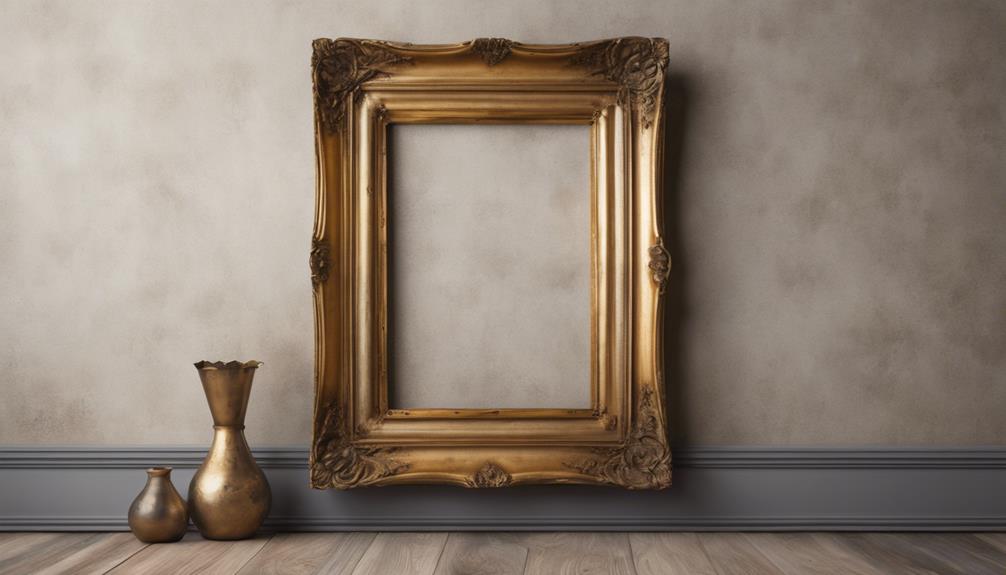
By juxtaposing ornate and modern frame styles, you create an intriguing visual tension that adds depth and character to your space. This contrast can elevate your empty frames from mere decorations to a thought-provoking art piece.
When combining contrasting frame styles, consider the following tips to create a visually appealing display:
- Mixing ornate and modern frame styles creates an eclectic look that adds personality to your space.
- Combining metal and wooden frames adds texture to the decor, making the display more engaging.
- Pairing large and small frames together creates a dynamic display that draws the eye to different areas of the arrangement.
Using Frames as a Shelf
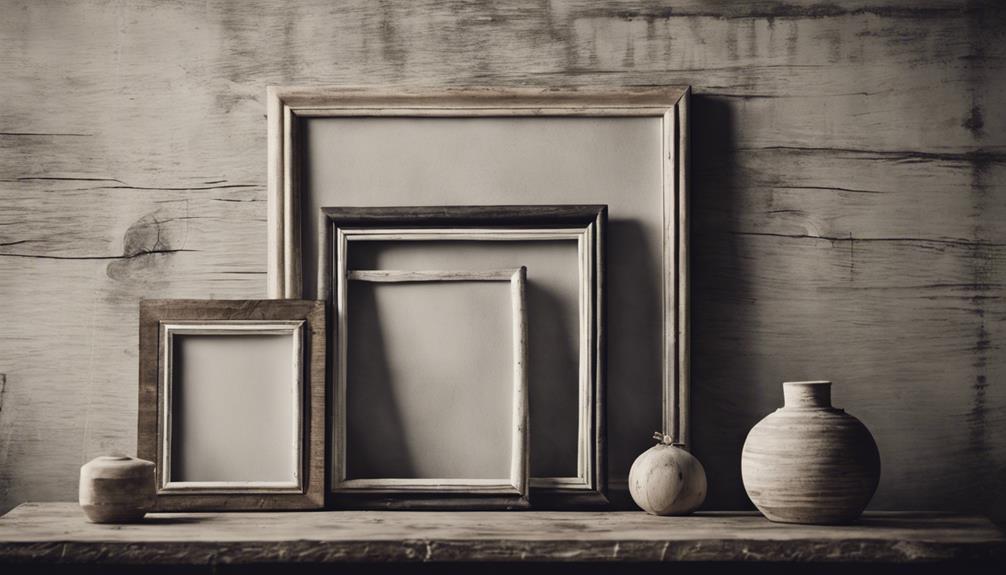
When you've exhausted the possibilities of hanging empty frames, consider repurposing them as functional shelves that add a touch of whimsy to your space. Remove the glass and backing, and you'll be left with a unique and functional shelf.
By placing the frames horizontally on the wall, you can create a one-of-a-kind display space. To match your room's decor, you can paint or adorn the frames, adding a cohesive touch to your space.
Using empty frames as shelves not only adds a touch of creativity but also offers a versatile way to display small decor items or plants. This creative solution can elevate your space, making it stand out from the crowd.
You can use empty frames of various shapes and sizes to create a visually appealing display. So, get creative, and think outside the frame – or rather, use the frame as a shelf to add a touch of whimsy to your space!
Creating a Gallery Wall Effect
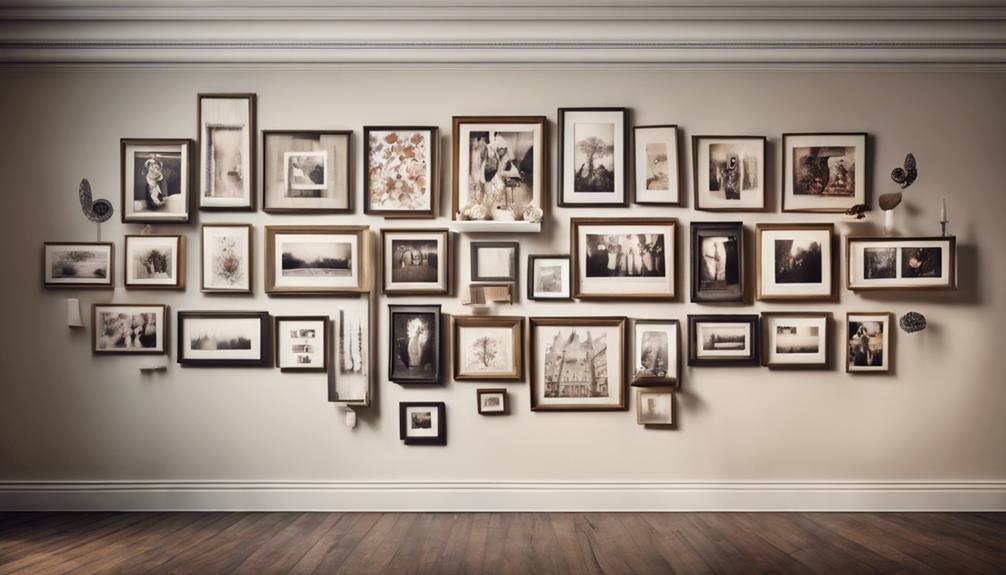
When creating a gallery wall effect, you'll want to think strategically about frame placement to achieve a visually appealing arrangement.
To add some flair, try mixing frame sizes, shapes, and colors to create a unique and enchanting display.
Frame Placement Strategies
To create a striking gallery wall effect, you'll want to strategically arrange your empty frames to draw the viewer's eye through the space. This involves more than just slapping a few frames on the wall; it requires a thoughtful approach to frame placement.
When planning your gallery wall, consider the following strategies to achieve a visually appealing arrangement:
- Experiment with different layouts: Don't be afraid to try out various arrangements until you find one that works for you.
- Use a template or layout guide: This can help you visualize your design and make sure everything is level and balanced.
- Create a focal point: Designate a central frame or a group of frames as the main attraction, and arrange the rest of the frames around it.
Mixing Frame Sizes
By thoughtfully combining frames of varying sizes, you can create a visually striking gallery wall that adds depth and visual interest to any room. Mixing frame sizes is an effective way to create a dynamic gallery wall effect, as it adds visual interest and depth to the display.
When clustering or arranging frames, use larger frames as anchors and smaller frames as accents to create a cohesive look. Experimenting with combining frames of different sizes allows you to create a personalized gallery wall that reflects your style.
To achieve a balanced composition, consider the empty frames' dimensions and how they'll interact with each other. By mixing frame sizes, you can create a visually appealing display that draws the eye around the room. Remember, the key is to balance larger frames with smaller ones, creating a harmonious arrangement that adds visual interest to your space.
With empty frames, the possibilities are endless, and by mixing frame sizes, you can create a unique and engaging gallery wall that showcases your creativity.
Incorporating Mirrors and Frames
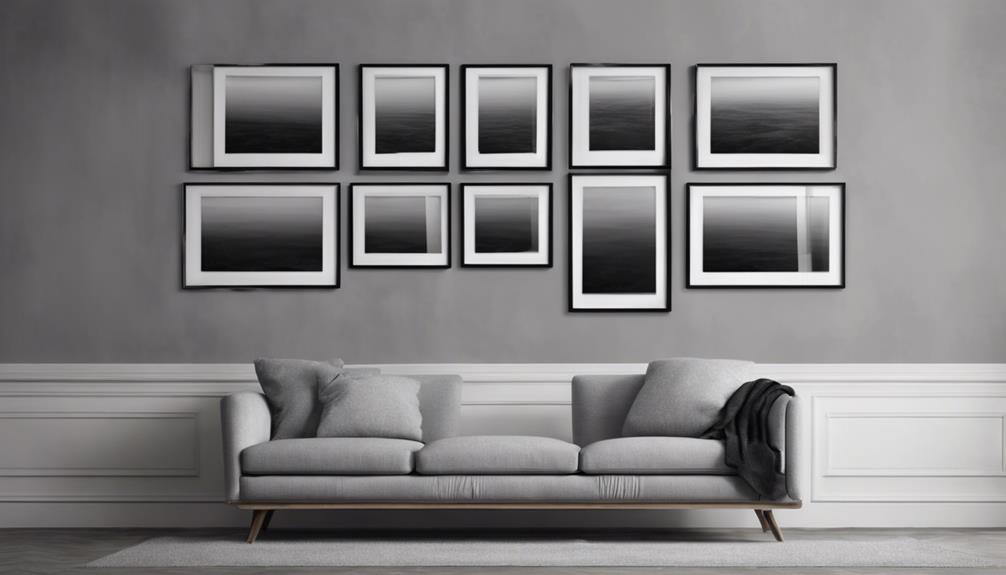
You can add a touch of elegance to your walls by combining mirrors and frames, creating a stylish and functional decor element that serves a practical purpose while enhancing the visual appeal of your space. By incorporating mirrors into your empty frames, you can create a unique and eye-catching display that adds depth and light to any room.
Here are a few ways to get creative with mirrors and frames:
- Use ornate frames to highlight the beauty of a simple mirror, adding a touch of sophistication to your decor.
- Combine multiple mirrors of different shapes and sizes within a single frame, creating a visually interesting and dynamic display.
- Place a small mirror inside a large, ornate frame, creating a striking focal point in any room.
Making a Statement With Scale
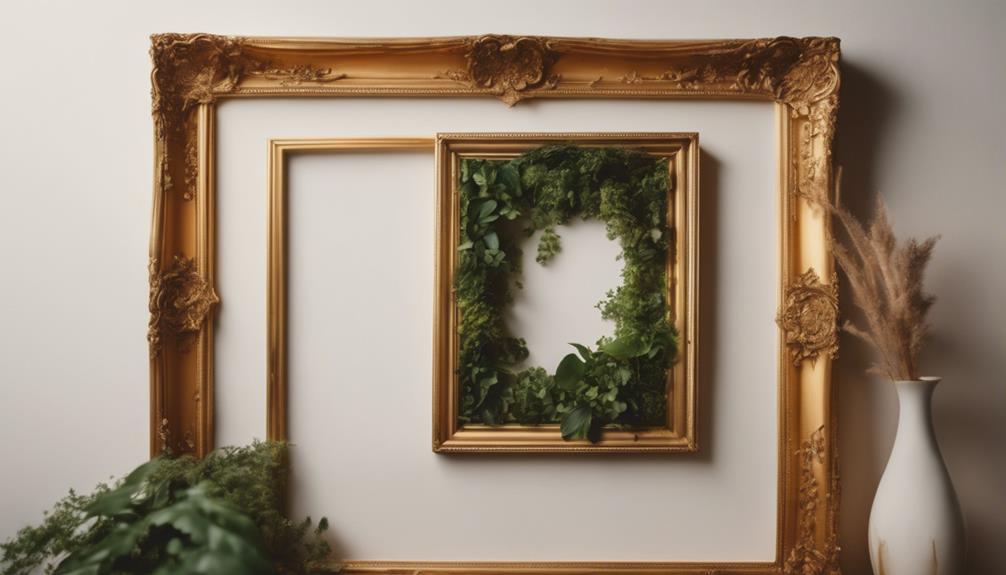
Large empty frames can make a bold statement in a room, drawing attention and adding visual interest, and experimenting with different sizes can help you find the perfect scale to elevate your space.
When it comes to making a statement with scale, oversized frames can serve as a focal point on a wall, creating a dramatic impact in the space. By using different frame sizes in a grouping, you can add depth and dimension to the decor, making the display more dynamic.
The beauty of working with empty frames is that you can adjust the scale based on the room size and layout, allowing for flexibility in design choices. Experimenting with various frame sizes can help you determine the ideal scale for achieving the desired decor effect.
Don't be afraid to mix and match frames of different sizes to create a visually appealing display that adds personality to your space. With empty frames, the possibilities are endless, and the right scale can make all the difference in creating a stunning decor piece.
Building a Frame Mosaic
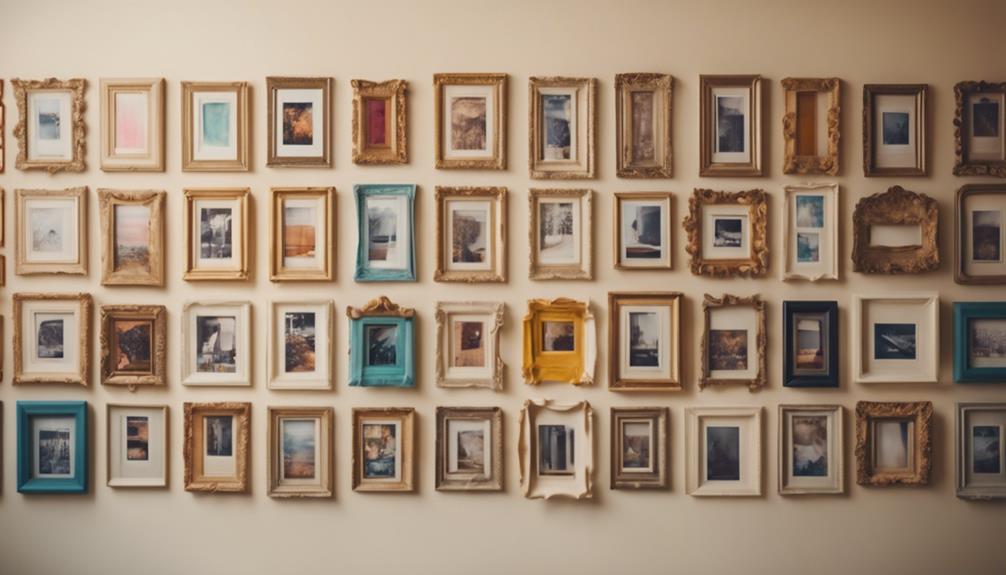
How can you create a unique visual display by combining empty frames of varying sizes, shapes, and styles to form a stunning mosaic on your wall? By arranging empty frames in a creative way, you can transform a blank wall into a focal point. Building a frame mosaic requires some experimentation, but the result is well worth the effort.
Here are some tips to get you started:
- Mix and match frames with different finishes and styles to add depth and dimension to the display.
- Use the frames to highlight artwork, photos, or other decor elements within the mosaic arrangement.
- Experiment with different layouts and configurations to find the most appealing composition for your space.
Frequently Asked Questions
How to Decorate With an Empty Frame?
When you're wondering how to decorate with an empty frame, start by considering its purpose. Will it be a focal point or blend into the background?
You can add small decorations like Putz houses or paint the frame to match your decor style. Suspend it with string and clothespins for a unique look or create a wall display to add architectural interest.
The possibilities are endless, and with a little creativity, an empty frame can become a stunning decorative piece that reflects your personal style.
What Can I Make With Old Frames?
You're grasping a treasure trove of possibilities in your hands, and it's time to unleash the creative potential of old frames.
Think of them as blank canvases, waiting for your artistic touch. You can transform them into functional pieces, like a jewelry organizer or a chalkboard, or use them as a backdrop for plants, mirrors, or shelves.
The possibilities are endless, and with a little creativity, you can turn these old frames into unique, conversation-starting decor pieces that reflect your personal style.
What Does an Empty Picture Frame Symbolize?
As you gaze at an empty picture frame, you're confronted with a canvas of possibilities. It symbolizes the potential for creativity and self-expression, a blank slate waiting for your personal touch.
The empty frame also represents minimalism, simplicity, and the beauty of negative space. It evokes a sense of anticipation, inviting you to imagine what could be displayed within it.
What Else Can You Put in Picture Frames?
You might be surprised at the versatility of empty picture frames. When it comes to deciding what else you can put in them, the possibilities are endless.
Consider showcasing small decorative items like miniature vases, tiny ornaments, or even seashells.
You can also use them to display sentimental trinkets, like love letters or childhood artwork.
Get creative and think outside the frame – literally!
Conclusion
As you've explored these creative ideas for decorating with empty frames, you've discovered a world of possibilities.
You've turned blank spaces into statement pieces, and transformed your walls into a canvas of self-expression.
But, the real question is, what's next?
Will you push the boundaries of frame arrangement or explore new textures and colors?
The possibilities are endless, and the art of decorating with empty frames is yours to master.
